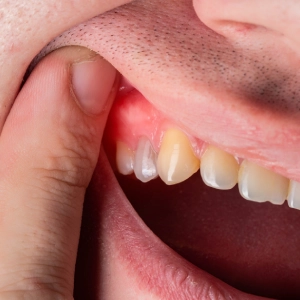We've all been there – sudden toothaches or accidents that catch us off guard. That's why knowing "What to do in a dental emergency?" is key to easing discomfort and avoiding further issues.
In this blog, we'll dive into practical tips and strategies for handling dental emergencies calmly. From spotting common problems to giving first aid, our aim is to give you the confidence to handle and effectively manage any dental emergency that comes your way.
How to manage Dental Emergencies?
Here's a quick guide on how to handle dental emergencies:
Toothaches
- Rinse your mouth with lukewarm water and carefully floss to remove any trapped food particles.
- Apply some cold compress to the outside of your mouth or cheek to reduce swelling.
- Don't place aspirin or other painkillers directly on the gums to prevent irritation.
- Ensure you see your dentist promptly for a thorough evaluation and appropriate treatment.
Chipped or Broken Teeth
- Save any broken pieces of your teeth and rinse your mouth, including the broken fragments, with warm water.
- Apply gauze to the bleeding area for approximately 10 minutes or until the bleeding subsides.
- Use a cold compress outside your mouth, cheek, or lip near the chipped tooth to reduce swelling and alleviate pain.
- It's vital to seek prompt evaluation and treatment from your dentist as soon as possible.
Knocked-out Tooth
- Find the knocked-out tooth and hold it by the crown. Rinse the root with water if it's dirty, but avoid scrubbing or removing any attached tissue.
- If possible, try reinserting the tooth, ensuring it faces the correct direction. Never force it into the socket.
- If reinsertion isn't possible, keep the tooth in your mouth or place it in milk or a cell growth medium like Save-a-Tooth.
- Seek immediate dental attention.
Extruded (Partially Dislodged) Tooth
- If you have a partially dislodged tooth, see your dentist promptly.
- While on your way to the dentist, apply a cold compress to the mouth or cheek in the affected area.
- To reduce discomfort, take an Advil or Tylenol.
Removing Food Caught Between Teeth
- Carefully remove the object stuck between the teeth using dental floss.
- Avoid using sharp objects like pins, which can cause gum cuts or tooth scratches.
Lost Filling
- Put a piece of sugarless gum in the hole (avoid sugary gum to prevent discomfort), or use over-the-counter dental cement for a quick fix.
- Schedule an appointment with the dentist at your earliest convenience.
Lost Crown
- If your crown comes off, schedule a prompt appointment with your dentist and bring the crown with you.
- If immediate dental care isn't available and the tooth causes discomfort, apply clove oil to the sensitive area with a cotton swab.
- Before reattaching the crown, coat the inner surface with over-the-counter dental cement, toothpaste, or denture adhesive to help secure it.
Broken Braces and Wires
- If a wire breaks from a bracket and causes irritation to the cheek, tongue, or gum, use the eraser end of a pencil to push the wire into a comfortable position.
- If you cannot adjust the wire, cover the broken end with orthodontic wax or a piece of cotton until you visit your orthodontist.
- Refrain from cutting the wire at home to prevent swallowing or inhaling it.
Loose Brackets and Bands
- Use orthodontic wax to temporarily stick loose braces back on or to provide cushioning over them.
- If a band becomes loose, save it and schedule an appointment with your orthodontist to repair or replace it, including any missing spacers.
Abscess
- Abscesses are severe infections that can occur around a tooth's root or in the space between the teeth and gums.
- They can cause tissue and tooth damage, with the infection spreading to other areas of the body if not treated.
- If you see a pimple-like swelling on your gum and it hurts, go to the dentist right away.
- Rinse your mouth several times a day using a mild salt water solution (half a teaspoon of table salt + 8 ounces of water) to drain pus.
Soft Tissue Injuries
- Soft tissue injuries to the tongue, cheeks, gums, and lips can cause bleeding.
- Rinse your mouth with a salt-water solution to rinse your mouth to control bleeding.
- Apply a wet piece of gauze or tea bag to the bleeding area and hold for 15 to 20 minutes.
- Use a cold compress outside the mouth or cheek for 5 to 10 minutes to reduce bleeding and pain.
- If bleeding persists, seek immediate dental attention or visit a hospital emergency room.
- Maintain pressure on the bleeding site with the gauze until you receive treatment.
Conclusion
Knowing what to do in a dental emergency makes a significant difference in minimizing pain, preventing further damage, and preserving your oral health. By following the tips and guidelines outlined in this blog, you can be better prepared to handle unexpected dental situations with confidence and composure.
Ready to take control of your dental emergencies? Book an appointment with Arlington Dental Excellence in Arlington, VA, today. New patients can dial (703) 420-3253, while all other callers can reach us at (703) 525-0157. Your dental health is our priority!
FAQ
How do you handle a dental emergency?
Begin by cleaning the injured area with warm water and applying a cold washcloth to reduce swelling. In the event of permanent tooth loss, act quickly. If feasible, locate the tooth.
What should I do if I knock out a tooth?
If you knock out a tooth, handle it by the crown, rinse it gently, and try to reinsert it into the socket. If not possible, keep it moist and seek dental care immediately.
How can I alleviate tooth pain in a dental emergency?
To reduce tooth pain, rinse your mouth with warm water, floss gently to remove debris, and apply a cold compress to the affected area. Seek dental attention promptly.






